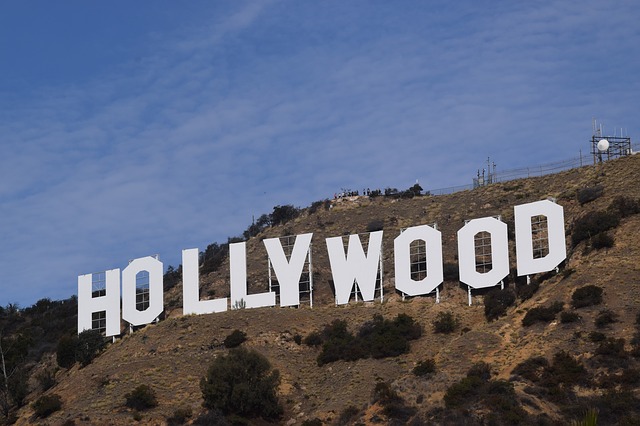Unscrupulous Mafiosi, serial killers, human traffickers – Hollywood loves a good bad guy. They send shivers down our collective spine, and keep us glued to the screen, paralysed with fear. But when the film is about human trafficking, do these Hollywood depictions of the issue have a downside too?
WHAT DOES HOLLYWOOD TELL US ABOUT HUMAN TRAFFICKING?

In its search for characters, Hollywood often looks to the real world for inspiration. So as human trafficking generates increasingly high levels of attention, it was really only a matter of time before the issue hit the big screen. Human traffickers are the bad guys, obviously, enslaving people and exploiting them for personal gain.
We all know them: the heroes who smash the human trafficking ring and ride off into the sunset with the victims they have saved. One of the best examples of this is the “Taken” series, starring Liam Neeson. In the first part, our ex-CIA agent has 96 hours to save his daughter from an Albanian sex trafficking ring in Paris which kidnaps young people, drugs them and sells them to sheikhs in the Middle East. Then there’s Mira Sorvino playing a New York police officer working undercover to break up a Russian human trafficking ring in “Human Trafficking”. Or “The Whistleblower”, based on a true story, which accompanies Rachel Weisz, a UN peacekeeper, as she uncovers atrocities in Bosnia-Herzegovina shortly after the Balkan Wars of the 1990s. So what’s the problem with the way this critically important issue is depicted?
THE PROBLEM WITH HOLLYWOOD
The relationship between Hollywood and human trafficking has many consequences – some good, some less so. On the one hand, examples such as those mentioned above do create awareness of human trafficking. At the same time, however, they also serve to disseminate and strengthen crucial misunderstandings about human trafficking, as Jonathan Todres explains. The American professor of law has focussed on the influence of blockbusters on our understanding of human trafficking, arriving at a number of decisive conclusions in the process.
Most Hollywood films focus exclusively on sex trafficking of young women and girls. That means other forms of human trafficking are not even addressed, however, despite the fact that men and members of the LGBTQ+ community can also be affected. White characters, usually American, are celebrated as heroes, with the cultural “others” – Albanians, Arabs or Russians – portrayed as the bad guys. This is completely disconnected from reality, however, where human traffickers primarily lure victims into slavery from their own country, or even domestic environment. And finally – this is Hollywood, after all – the story has to end with the victims being rescued. The issue of an experience of this sort subjecting victims to a continuing psychological ordeal is no longer broached, however.

If we want to tackle human trafficking correctly and effectively, it is essential that we understand exactly what the issue is. As with other violent crimes, only a fraction of the population has personal experience of human trafficking. Few people have ever spoken to a victim about his or her experiences, or read any research on the issue. The majority of the public defines its knowledge of human trafficking according to how the issue is portrayed in the media. These depictions, in turn, shape our understanding of the issue on a national or regional level rather than a personal one.
Todres found many of these distorted portrayals reappearing in the media, politics and legislation. Our criminal law reflects the “rescue narrative”. Prosecution of perpetrators is necessary, of course – but it is far from the whole story. Considerably fewer resources are devoted to other key aspects such as prevention and the services available to victims. The focus is on sex trafficking and female victims, with investigations into poor working conditions and the incidence of forced labour in other industries often lagging behind, despite the fact that it can safely be assumed that the numbers of victims impacted by these problems are actually far larger.
We can’t change Hollywood, of course, but we can recommend to you some films that chose a different approach in the way they portrayed the situation and characters involved in human trafficking, and by doing so, actively contributed to our gaining a more informed understanding of the issue overall.
FILMS AND DOCUMENTARIES THAT TELL THE REAL STORY – A FEW SUGGESTIONS

We’ve put together a list of informative films and documentaries, so you don’t have to make your understanding of human trafficking dependent on Hollywood blockbusters. Should you know of any others, please drop us a line – we look forward to hearing from you, and wish you an enjoyable cinematic experience!
DIE WARE MENSCH – VON AUSBEUTUNG UND MODERNER SKLAVEREI (2018)
In this Planet Wissen documentary from SWR, historian Prof. Michael Zeuske reports on the numerous different facets of slavery around the world, from the past to the present day.
https://www1.wdr.de/mediathek/video-die-ware-mensch—von-ausbeutung-und-moderner-sklaverei-100.html
THE STORM MAKERS (2014)
The Storm Makers is a shocking exposé of the Cambodian underworld of human trafficking that takes an eye-opening look at the complex cycle of poverty, desperation and greed that drives the brutal modern slave trade, with frightening openness.
TRACES OF TRADE (2008)
Producer/director Katrina Browne tells the story of her ancestors, once the largest slave-trading family in the history of the USA. Given the myth that southern states alone were responsible for slavery, viewers may be surprised to learn that Browne’s forefathers came from the north. The film follows Browne and nine other family members on a remarkable journey as they are confronted by the history and legacy of the company, shrouded in secrecy in New England.
NOT MY LIFE (2011)
Although Not My Life concentrates on the systematic subjugation and abuse of children, it covers a wide range of issues. Made on five continents and across 13 different countries, the film investigates the numerous ways in which young people – now numbering around 29 million in total – can be enslaved and exploited, ranging from forced labour and domestic slavery to sex trafficking and the use of child soldiers.
JOY (2018)
JOY tells the story of a young Nigerian woman who finds herself caught up in a vicious circle of human trafficking and sexual exploitation as she works as a prostitute in Vienna trying to buy her freedom from her (female) pimp or “Madame”, support her family in Nigeria and offer her daughter a secure future.
NEFARIOUS: MERCHANT OF SOULS (2011)
This documentary by filmmaker Benjamin Nolot deals with the issue of sex slavery in the modern world. Together with his “Exodus Cry” team, Nolot travels the world to interview those affected and former pimps. He explains the dramatic and urgent nature of human trafficking nowadays – and offers a surprising end to his story.
Translation by Tim Martinz-Lywood, European Exchange Ltd.
www.european-exchange.co.uk
